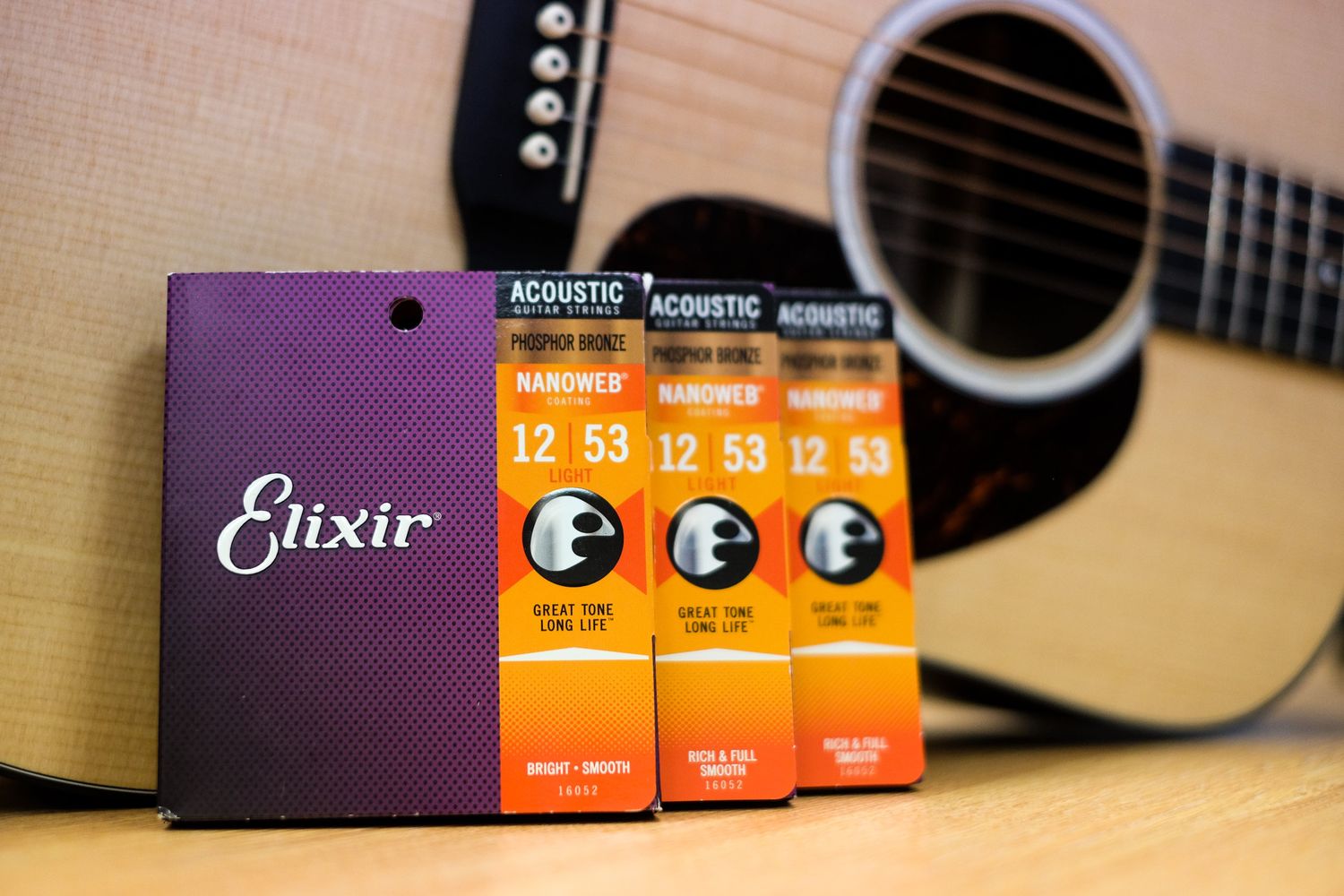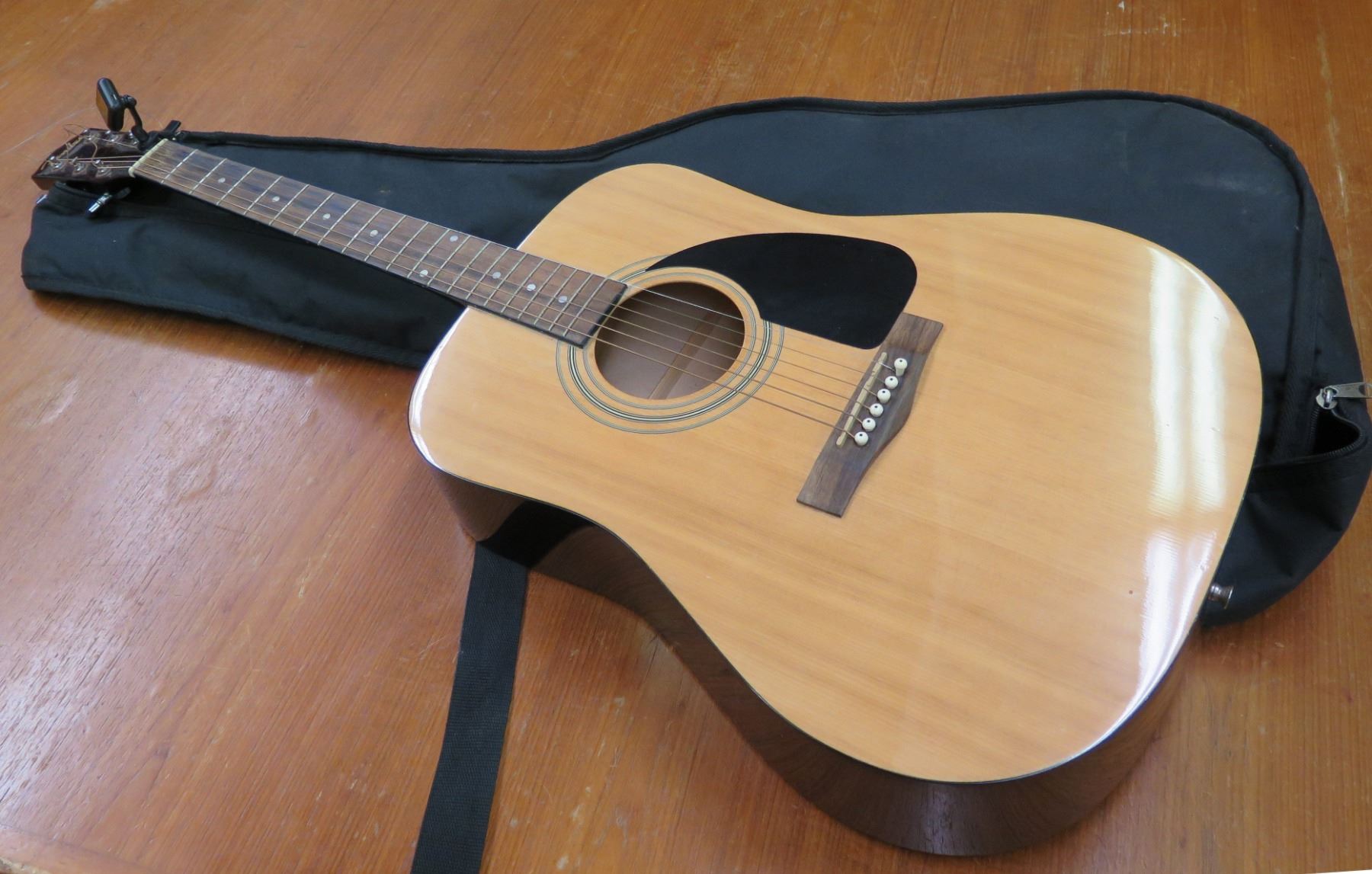Home>Production & Technology>Acoustic>What Are The Strings Called On An Acoustic Guitar


Acoustic
What Are The Strings Called On An Acoustic Guitar
Published: March 10, 2024
Discover the essential components of an acoustic guitar and learn about the purpose and types of strings used on this popular instrument. Explore the different materials and gauges to find the perfect acoustic guitar strings for your playing style.
(Many of the links in this article redirect to a specific reviewed product. Your purchase of these products through affiliate links helps to generate commission for AudioLover.com, at no extra cost. Learn more)
Table of Contents
Introduction
The strings of an acoustic guitar are not just mere components; they are the conduits through which music flows, resonating with emotion and melody. Understanding the names and characteristics of these strings is fundamental for any aspiring guitarist. Whether you are a novice eager to embark on your musical journey or a seasoned player seeking to deepen your knowledge, delving into the intricacies of acoustic guitar strings is a worthwhile endeavor.
The strings of an acoustic guitar are the lifeblood of its soulful sound. Each string possesses its own unique identity, contributing to the harmonious blend of notes that define the instrument's melodic allure. From the deep, resonant bass notes to the vibrant, high-pitched tones, the strings form a symphonic partnership, allowing the guitarist to weave a tapestry of musical expression.
As we embark on this exploration, we will unravel the mystery behind the names of the guitar strings and delve into the standard tuning of an acoustic guitar. Moreover, we will uncover the significance of understanding the names of the guitar strings and provide valuable tips for remembering them effortlessly. By the end of this journey, you will not only possess a deeper understanding of the acoustic guitar's strings but also a newfound appreciation for the artistry and craftsmanship that underpin this beloved instrument.
The Names of the Guitar Strings
The strings of an acoustic guitar are typically named after the notes they produce when played open, without any frets pressed down. In standard tuning, the strings are named from the thickest to the thinnest as follows:
-
E string (6th string): Also known as the low E string, it produces the lowest pitch on the guitar. When tuned to standard pitch, it resonates at 82.41 Hz, creating a deep and resonant tone that forms the foundation of many musical compositions.
-
A string (5th string): The A string emits a rich and warm tone, serving as a crucial component of the guitar's tonal range. When tuned to standard pitch, it vibrates at 110 Hz, offering a melodic depth that complements the low E string.
-
D string (4th string): Tuned to 146.83 Hz in standard pitch, the D string adds a vibrant and expressive quality to the guitar's sound. Its resonant notes contribute to the instrument's versatility, allowing for dynamic chord progressions and captivating melodies.
-
G string (3rd string): With a standard pitch frequency of 196 Hz, the G string introduces a lively and spirited element to the guitar's tonal spectrum. Its distinctive resonance enhances the instrument's ability to convey emotion and musical nuance.
-
B string (2nd string): The B string, tuned to 246.94 Hz in standard pitch, imparts a bright and melodious character to the guitar's sound. Its higher frequency adds a shimmering quality to chords and arpeggios, enriching the overall sonic texture.
-
E string (1st string): Often referred to as the high E string, it produces the highest pitch among the guitar strings. Vibrating at 329.63 Hz in standard tuning, the high E string contributes a sparkling and ethereal quality to the instrument's melodic range.
Understanding the names and characteristics of each guitar string is essential for mastering the instrument. By familiarizing oneself with the unique tonal qualities and pitch frequencies of the strings, guitarists can harness the full expressive potential of the acoustic guitar, creating captivating melodies and harmonious compositions.
The Standard Tuning of an Acoustic Guitar
The standard tuning of an acoustic guitar is a foundational aspect of its sonic identity, shaping the instrument's tonal range and melodic possibilities. In standard tuning, the strings are tuned to specific pitches, allowing for a harmonious blend of notes and chords. This tuning configuration serves as a universal reference point for guitarists, enabling seamless communication and collaboration across musical contexts.
The standard tuning of an acoustic guitar, when adhered to, ensures consistency and coherence in musical compositions and performances. The tuning of the strings, from the lowest to the highest pitch, is as follows:
-
E string (6th string): The lowest-pitched string, also known as the low E string, is tuned to E2. This deep and resonant note forms the foundation of many musical arrangements, providing a solid anchor for chord progressions and bass lines.
-
A string (5th string): The A string, tuned to A2, complements the low E string with its rich and warm tonality. Its harmonic resonance adds depth and character to the guitar's sonic palette, enhancing the melodic expressiveness of compositions.
-
D string (4th string): Tuned to D3, the D string introduces a vibrant and expressive quality to the guitar's sound. Its mid-range pitch frequency allows for dynamic chord voicings and melodic embellishments, contributing to the instrument's versatility.
-
G string (3rd string): The G string, tuned to G3, infuses the guitar's tonal spectrum with liveliness and spirit. Its resonant notes convey emotion and musical nuance, enriching compositions with dynamic textures and harmonic interplay.
-
B string (2nd string): Tuned to B3, the B string imparts a bright and melodious character to the guitar's sound. Its higher frequency adds a shimmering quality to arpeggios and lead passages, enhancing the instrument's melodic expressiveness.
-
E string (1st string): The highest-pitched string, often referred to as the high E string, is tuned to E4. Its sparkling and ethereal quality elevates the guitar's melodic range, adding brilliance to chord voicings and intricate melodies.
By adhering to the standard tuning of an acoustic guitar, musicians can explore a vast array of musical possibilities, from soulful ballads to energetic compositions. This universal tuning configuration serves as a gateway to creative expression, empowering guitarists to unleash the full potential of the instrument's sonic capabilities.
Understanding the standard tuning of an acoustic guitar is paramount for aspiring musicians, as it forms the bedrock of their musical journey. Mastery of this fundamental aspect lays the groundwork for artistic exploration and technical proficiency, enabling guitarists to navigate the boundless realm of musical creativity with confidence and skill.
The Importance of Knowing the Names of the Guitar Strings
Understanding the names of the guitar strings is not merely a matter of memorization; it is a gateway to musical fluency and creative expression. For aspiring guitarists, familiarizing themselves with the distinct identities of each string is a foundational step towards mastering the instrument. This knowledge empowers musicians to navigate the fretboard with confidence, unlocking a myriad of melodic possibilities and harmonic combinations.
By internalizing the names of the guitar strings, musicians cultivate a deep sense of connection with their instrument. Each string becomes more than a mere component; it becomes a conduit for artistic expression. This intimate familiarity allows guitarists to instinctively navigate the fretboard, effortlessly translating their musical ideas into tangible melodies and chord progressions.
Moreover, knowing the names of the guitar strings facilitates effective communication and collaboration among musicians. When discussing musical arrangements, compositions, or improvisations, the ability to articulate specific string names and fret positions fosters clear and precise communication. This shared understanding enhances the efficiency of rehearsals and performances, enabling seamless coordination and harmonious musical synergy.
Furthermore, the names of the guitar strings serve as a foundational framework for learning music theory and fretboard navigation. Aspiring guitarists who grasp the unique tonal characteristics and pitch frequencies of each string gain a deeper understanding of chord structures, scale patterns, and interval relationships. This knowledge forms the bedrock of musical proficiency, empowering musicians to explore complex harmonies and intricate melodies with confidence and precision.
In addition, familiarity with the names of the guitar strings nurtures a heightened awareness of tonal balance and sonic textures. By recognizing the distinct tonal qualities of each string, guitarists can craft nuanced arrangements and melodic motifs that leverage the instrument's full sonic potential. This acute sensitivity to tonal nuances enriches musical compositions, elevating them from mere notes on a page to evocative expressions of emotion and artistry.
Ultimately, knowing the names of the guitar strings transcends rote memorization; it embodies a profound connection to the instrument's essence. It empowers musicians to communicate, create, and innovate with fluency and finesse, laying the groundwork for a lifelong journey of musical exploration and expression.
Tips for Remembering the Names of the Guitar Strings
Mastering the names of the guitar strings is a pivotal step in the journey of every guitarist. While it may initially seem daunting, there are several effective strategies that can aid in remembering the names of the strings with ease and confidence. Here are some valuable tips to enhance your memorization and recall of the guitar string names:
-
Acronyms and Mnemonics: Create acronyms or mnemonic devices to associate with the string names. For example, the popular mnemonic "Eddie Ate Dynamite, Good Bye Eddie" represents the string names in standard tuning (E, A, D, G, B, E). Crafting personalized acronyms or phrases can provide a memorable and fun way to internalize the string names.
-
Visual Aids: Utilize visual aids such as diagrams or flashcards depicting the guitar strings and their corresponding names. Visual reinforcement can strengthen memory retention and association, making it easier to recall the string names during practice sessions and performances.
-
Repetition and Practice: Incorporate regular repetition and practice into your learning routine. Verbally recite the string names while tuning your guitar or during warm-up exercises. Consistent repetition reinforces memory recall and solidifies the association between the string names and their respective pitches.
-
Song-Based Memory: Learn songs that involve open strings, and consciously identify the names of the strings as you play. Associating the string names with specific musical passages or chord progressions can embed the information in your memory through practical application.
-
Verbalize and Vocalize: Verbalize the string names aloud as you play or tune your guitar. Engaging multiple sensory modalities, such as auditory and kinesthetic, can enhance memory encoding and retrieval, strengthening your ability to recall the string names effortlessly.
-
Contextual Association: Create contextual associations between the string names and their musical characteristics. For instance, associate the low E string with deep, bass-heavy tones, and the high E string with bright, shimmering notes. This contextual framework can aid in recalling the string names based on their sonic attributes.
-
Progressive Learning: Start by focusing on memorizing the names of one or two strings at a time, gradually expanding your knowledge to encompass all six strings. Breaking down the learning process into manageable segments can prevent overwhelm and facilitate steady progress.
By incorporating these tips into your practice regimen, you can enhance your ability to remember and recall the names of the guitar strings with confidence and precision. Embrace these strategies as valuable tools in your musical journey, and witness the transformation of string names from a challenge to a seamless aspect of your guitar proficiency.
Conclusion
In the realm of acoustic guitar mastery, the names of the strings serve as the foundational pillars upon which musical fluency and creative expression are built. As we conclude this exploration of the guitar strings, it becomes evident that their significance transcends mere nomenclature; they embody the essence of musical artistry and technical proficiency.
By unraveling the mystery behind the names of the guitar strings and delving into the standard tuning of an acoustic guitar, we have embarked on a journey of discovery and enlightenment. We have uncovered the unique tonal characteristics and pitch frequencies of each string, gaining a deeper understanding of their individual roles in shaping the instrument's sonic identity.
The importance of knowing the names of the guitar strings extends far beyond memorization; it fosters a profound connection with the instrument, empowering musicians to navigate the fretboard with confidence and finesse. This intimate familiarity with the strings cultivates a heightened awareness of tonal balance and sonic textures, enriching musical compositions with depth and nuance.
Moreover, the ability to articulate specific string names and fret positions facilitates effective communication and collaboration among musicians, enhancing the efficiency of rehearsals and performances. This shared understanding forms the bedrock of harmonious musical synergy, enabling seamless coordination and expressive cohesion.
Aspiring guitarists are encouraged to embrace the tips for remembering the names of the guitar strings, incorporating mnemonic devices, visual aids, and contextual associations into their learning journey. By doing so, they can enhance their memorization and recall of the string names, transforming a seemingly daunting task into a seamless aspect of their guitar proficiency.
In essence, the names of the guitar strings are not mere labels; they are the conduits through which musical expression flows. They embody the soulful resonance of the acoustic guitar, weaving a tapestry of melodies and harmonies that transcend language and culture. As musicians, let us embrace the names of the guitar strings as cherished companions on our musical odyssey, guiding us towards a symphony of creativity and artistry.











